Garden geranium - truly unique plant. Perennial and frost-resistant, practically not requiring care after landing, the testing and perfectly carrying drought, this culture is able to grow in one place under 15 years. It is amazing that beautiful not only flowers, but also geranium leaves. Not a single gardener will leave indifferent versatility of this perennial: with a long period of flowering and variety varieties, it can be used on any flowering beds and natural natural areas of the garden.
Pelargonium is a widespread room plant. Extremely beautiful decorative culture is not just able to replenish the aesthetic perception of others, but also to give a good mood, remove headaches, fight the nerve and gastrointestinal disorders. Such a bouquet of useful properties will not be able to bypass any flower deaf. And taking into account, unpretentiousness in the care and long abundant period of blooming Pelargonium, this plant can rightly be called a "real home holiday".
Many people think that Geranium and Pelargonium is the same plant, but in fact they belong to the various kinds of one family and have a number of differences. In this article, we will try to figure out what the difference between these plants is what features of planting and leaving, both garden geranium and room pelargonium. For any flower, it is fundamentally important to understand the differences between related representatives in order not to confuse when choosing a particular variety and grow on its site or in a flower pot, exactly the plant, which was intended initially. After reading the material presented below, everyone can easily decide on the choice of a beloved plant, providing him with the right care and the necessary agrotechnik.
The difference between geranium and pelargonium
In view of frequent confusion, it is important to immediately note the difference between geranium and pelargonium, which is also often often, but incorrectly, referred to as "Geran".
So, geranium or chewing (genus geranium) is a perennial and frost-resistant plant, and Pelargonium (genus Pelargonium ) - All the favorite thermal lowed room flower. Both representatives relate to various kinds of one family - Geraniev. That is why, the indoor pot plant - Pelargonium - accustomed to be called both geranium.
Garden geranium grows in the gardens and in the flower beds, perfectly transfers the winter and pleases the gardeners with plentiful blossoms not one season. Pelargonium can also be planted in open ground, but, given its thermal-loving properties, only in the warm season. Before the onset of cold weather, it is digging and transplanting again into the room flower pots again.
Consider in more detail the peculiarities of growing and care of geraniums, its variety variety and use of a person.
Geranium, description
About 400 types of herbs and semi-stares of the genus geranium growing around the world are known. Geranium began to grow in Europe in the 17th century, and in Russia she fell only in the 18th century. Most new varieties of garden geranium is England. The name of the plant "GERANION" is translated from Greek as "crane". Such an unusual comparison is explained by the fact that the fruits of geranium resemble the beak of the crane, so the plant is often called the "chewing".
Geranium leaves - on stiffs, softwife, dissected in different ways: and palphearanally, palpopstand or peristo, with 3-5 leaves.
Flowers are large and beautiful, consist of 5 petals of the bunny, round shape, and 5 cups. On one shoot, as a rule, is located from 1 to 3 flowers. The color of Geranium colors is rather diverse, depending on the variety: white, pink, blue, purple, etc.
The fruit is a box that drops unusual: bottom up.
Geranium is a stable, disposable, decorative stable plant. And the culture is appreciated not so much for beautiful flowering, as for their attractive habitus - it forms compact dense bushes with spectacular openwork leaves, which retain their decorativeness until the winter, can grow a thick carpet and have different sizes and painting of flowers and leaves.
Types and varieties of geranium
Gerani views are affected by the imagination of any enthusiastic flower. Recently, a variety of geranium varieties, distinguished by special botanical signs and the form of buds, are derived. And the representatives of the Geranium family are appreciated not only for the beauty of flowers, but also leaves.
Each view of Gerani has its own varieties. They differ from each other in appearance and other characteristics.
Conditionally, for the convenience of use, Gerani is divided into two groups: high (50 cm and above) and low (10-50 cm).
Consider the most common and cultivated types of Gerani:
High Gerani
- Gerana Bolotnaya
Perennial grassy plant with powerful rhizome and large roasting seven-grade leaves on long, up to 20 cm, hairy stiffs. The stem is a reprehensive or lifting, masty, reaches a height of 70 cm. Stem leaves are five-part, slightly gentle. Flowers are large, up to 3 cm in diameter, purple petals.
Geranium grows in wet places on plains, among the hills and swamps. It blooms in June-July, and by the end of August, even the leaves die, the seeds are rapidly tremendous, giving the spring abundant self-access. Gerana Swamp Our ancestors were used with stomach disorders, enterocolite, colic in the side, uterine bleeding after childbirth, during heaming, for washing purulent ulcers and wounds, treatment of inflamed throat.
- Gorgeous geranium
This kind of geranium garden corresponds to its name - bright and huge colors of saturated lilac color spectacularly stand out against the background of no less beautiful pubescent leaves. Geranium blooms early: from the end of May and before the beginning of June. Prefers solar or slightly shaded places with fertile and treated soil. Under such favorable conditions, Gerani bushes quickly grow and reaches a height of about 50 cm.
- Gerania Georgian
One of the most beautiful and desired garden perennials growing in one place, without division and transplant, up to 10-12 years. The shrub is powerful, branched, grows up to 60-80 cm in height. Leaves are dense, greenish-gray from the downsion, very attractive. In the fall red and die on the winter. Flowers up to 4.5 cm in diameter, purple with purple veins, collected in umbrella inflorescence. Petals wedge-shaped, laid. Blossom starts from mid-June and lasts about 40 days. Blooming is plentiful, during this period, Geranian Georgian bushes are delightful: the whole waspiled with purple open and bright colors. The species is characterized by longevity, resistant to diseases, not demanding culture.
- Geranium Red-Buura
It is a pretty high bush - up to 1m, in the form of a hemisphere, with beautiful leaves. Flowers small, dark shades: from dark purple to dark burgundy. Flowering is long, 40-45 days, in July-August, numerous seeds ripen. Seedlings bloom in the second year. The perennial prefers the shadow / half, moderate moisture, loose, fertile, well-drained soils. This kind of geranium is often referred to as "dark brown." A rare dark color of flowers, the opening openness, a beautiful bush - all makes geranium very promising for the design of flower beds in the shade.
- Blood-red geranium
It is distinguished by a dense, spherical shape, a beautiful bush, about 60 cm high. The leaves are wintering, rounded, deeply dissected (in the form of stars), the bright color is acquired in autumn. Syrene-pink flowers, 3-4 cm in diameter, sleep the entire bush. Flowers long: from mid-June to August. Prefers a solar location or half-day, moderately fertile limestone soils, but develops well on any garden soils. In general, unpretentious and hardy decorative appearance growing in one place under 15 years. Excellent honey.
In recent years, breeders have brought about a dozen varieties of this geranium, especially good "Compactum", lush blooming all summer, low grade (up to 15 cm height) with pink flowers. Also popular Geranium Blood-Red varieties are also popular: Album (has white flowers), Ankum's Pride (flowers with bright pink flowers), Glenluce (distinguished by sun-and-pink inflorescences, with dark streaks), Nana (low grade with bright pink flowers), Prostratum (Low bush with dark pink flowers), Striatum (has light pink flowers with dark eye, low grade).
- Geranium forestry
The plant of the cold and moderate belt Eurasia. In nature, prefers forest privided zones or thickets, moistened and rich soils. The stem is up to 80 cm, a reprehensive, in the top of a branched, covered with hairs. Flowers are large, collected two in loose inflorescence, from pinkish-lilac and blue to white shades. Flowers in June - July. From flowers of Forest Gerani, a gray-blue dye was made, which was used in ancient Europe, for dyeing military raincoats. Also, the species is a good honeycomb and medicinal plant. The most popular varieties: Amy doncaster (has blue flowers with a white center), Mayflower (flowers with lilac blue buds with a white center), MERAN (characterized by purple inflorescences with a white center), Wannerii (has gentle pink small flowers). Most of the varieties transfer the temperature to -29 ° C.
- Geranium meadow
High (up to 1.2 m) Beautiful geranium with strongly dissected leaves and large flowers of blue or lilac colors. Shadisy, blooms from June to July. He has several dozen garden forms, especially its terry hybrid grade "Summer Skies". And the variety "Patricia" is a bright and catchy plant that occupies area of \u200b\u200babout one square meter.
- Gerana Smallotchikynova (Armenian)
This species is also called - "Gerana Chernozhaya" due to brightly raspberry flowers with black eye. Flowers from mid-June for one and a half months. Large bushes of this geranium up to 60-100 cm high can grow without transplanting up to 15 years and decorate solar places from spring to autumn. It grows well on rich, deep soils with sufficient moisture.
- Geranium flat
A long-term shrub, a height of 60-100 cm, rounded shape. The plant is fragrant, densely pubescent. SIZO-GREEN leaves, rounded, on long stiffs, die on the occurrence of frost. Blossom begins in June and lasts about 2 months, in August mature seeds. Petals flat, saturated blue-violet color. The view is stable in culture, widely used in flower beds. Prefers solar habitats, fertile soils, moderate moisturizing.
Low geraniums
- Geranium large-flowered (Himalayan)
Attractive bush form, compact form, not more than 30 cm high. It has rounded leaves. Flowers are large (4-5 cm in diameter), are located two on the flower, the original bluebavato purple color with reddish veins. Gimalayan geranium blooms at the end of May and blooms all summer. Low growth, beautiful shape dense bush, long blossoms make this kind of landscapes suitable for landscapes, especially on sunny places with well-drained soils. Interesting variety with terry flowers - Plenum. Most often in Europe, a low-spirited variety is grown with blue flowers - Fohnson's Blue, distinguished by long, abundant blossom.
- Gerana Dalmatskaya
Elegant geranium, thanks to creeping thin rhizomes, forms low (10-15 cm height) adder cover. Especially spectacular becomes such a cover at the end of June, when geranium blooms. It is covered in small (up to 3 cm in diameter) light pink buds and blooms to the most frosts. After the first frosts, the leaves acquire a beautiful pinkish-red shade, and then die away. Especially often grown with white flowers: geranium Dalmatian album.
- Gerana ash
Compact low-spirited bush, 10-15 cm high. Leaves rounded, with a sly, ash-ashten. White, pink, purple flowers, often with a dark spot in a diller or with a darker pattern on alkalis, with a diameter of 3-4 cm. It blooms abundantly in July -Avgush. Beautiful plant for rocaries. It needs solar location, moderately fertile and well-drained soil. Popular Gerani Sorts: Ballerina (pale pink flowers, with dark purple veins and center), Carol (Fuchi-pink flowers, with a dark center), Apple Blossom (Pink-rose flowers with pink strokes).
- Geranium Largenestia
Low long-term geranium with a thick rhizome and active breeding manner. Great grows on poor soils, exclusively drought-resistant, loves the sun or half. Forms a dense closed thicket, a height of 30-45 cm. The leaves are rounded, divided by 5-7 pieces, slightly pubescent, with rubbing make a characteristic smell of geranium. In the fall acquire a beautiful reddish hue. Purple-pink flowers, 2.5 cm in diameter, are collected into low-mounted umbrella inflorescences. Flowers in June. Popular geranium varieties: Spessart (white flowers with pink veins), Ingwersen's Variety (light pink flowers), Ynsverse (purple-pink flowers), Spessart (wintering leaves and white-pink flowers), Variegata (striped leaves).
The above species can grow in one place without division and transplant from 8 to 15 years. Primary signs of aging (dying of the middle of the bush) begin to manifest only for 6 to 7 years.
Geranian reproduction
Geranium breeds seed and vegetative way.
Reproduction with the help of seeds - A very laborious way, not always preserving the varietal signs of the plant. Some geranium varieties do not form seeds at all, and some are multiplied by selflessness without anyone's participation. Collect Sadovaya Gerani seeds is also not easy. Slowing mature fruits are instantly revealed, and unworthy seeds may not give desirable shoots. Therefore, in advance of the tops of the blur with fruits with fruits, hide into small canvas bags and tied up to the bottom so that the seeds remain inside.
So, you can use purchased seed material or collected yourself. Seeds are planted in an open ground in winter or spring (approximately in April). Plants will bloom only the next year.
Due to the troublesomeness of the process and the non-injected receipt of germs, seeds for reproduction of garden perennial geranium are used infrequently. It is much more efficient and easier to get a new plant by dividing an adult bush.
Most often, geranium breeds vegetative way. This method is not time consuming and avoids the crossing of varieties.
To do this, the shovel must be separated by a part of the bush with the root and transplant it to a new place. Do it, mostly early in the spring or at the beginning of the autumn, pre-supported the prepared part of the land in advance.
Some kinds are difficult to separate, so it is enough to separate only the escape, remove most of the leaves from it and determine in the greenhouse. During the month, the plant is rooted and will be ready to transplant to a permanent place on the site.
Also, for reproduction, the method of cutting the root cuttings of geraniums, which are treated with the root growth preparations. After that, they are determined in the greenhouse until the leaves appear.
As noted above, garden geranium does not like transplants and can grow in one place to 10-15 years. When rejuvenated and reproduction, the bush choose young roots with well-developed kidneys, and all old - remove. As a rule, young bushes quickly and easily take root in a new place.
Most of the species pleases the flower ones not one year, you only need to create a minimum of the conditions necessary for their successful growth, and in the future they will take care of themselves.
Geranium, landing and care
Geranium is an absolutely unpretentious plant, and grow a beautiful bush under the power even a novice flower.
Choosing place for landing Gerani, you need to take into account, first of all, features of a particular type: Some of them - prefer solar places or swampy terrain, others - moderate moisturizing or shadow.
Nevertheless, for most geranium varieties, an open or slightly shaded territory is preferable. Soil is better fertile, loose and well-driving air.
Given that Grana is usually a long rhizome, landing pit They do not wide, and deep - 20 cm deeper than the longest root. A little land is poured into the pit of a cone, on top of which and the roots are laid out. Then, the pit is completely covered with fertile soil, compacted and watering water. When preparing the soil to landing, fertilizers are used in the form of a reworked manure or compost.
Between the bushes, they leave at least 30-40 cm so that the roots of the plant grow up and did not interfere with each other. And, given that geranium grows for a long time in one place, without needing to transplant, it is necessary to distinguish enough space in advance for its subsequent growth.
Geranium garden practically does not need care. Transplantation and rejuvenation of geranium will not need many years. Moreover, the plant actively develops and does not make it possible to appear on the weeds.
If, immediately after landing, to climb the soil - the soil looser becomes not necessary.
Many geranium sorts are gardening - winter with leaves and do not need trimming. In addition, possessing frost-resistant qualities, geranium does not need shelter for the winter.
The only rules for the care of geranium Sadovaya is:
- timely watering;
Watering is especially important at first after landing and during a long drought.
- soil fertilizer;
Most of the grades need to be filtered by early spring nitrogen fertilizer, and in a month - any complex. Organic fertilizers can be used.
- wrestling with pests and diseases;
The sharp aroma of the leaves (due to saturation of essential oils) scares from geranium insect pests, and the disease is almost never amazed. Diseases can manifest only in cold and wet conditions:
- with pulse dew, patients of the plant are removed, and the rest are treated with a burgundy mixture;
- gray inclination testifies to the oveurgement of the soil - the affected plant is rarely able to save;
- Buuray spotty is eliminated by the processing of fungicide.
In dry and hot conditions on geraniums can settle the web mite: it is eliminated by insecticide or soapy solution.
In addition, garden geranium, highlighting a specific spicy aroma, saturated with essential oils and phytoncides, protects against diseases and pests of its neighbors in Klumba.
Use Gerani
-
in garden design
Thanks to varietal variety, unpretentiousness in care and spectacular appearance, geranium garden found its active use in landscape design and decorative gardening.
Genuine geranium varieties are often used as the soil perennial. Some types of garden geraniums are able to cover a rather large territory for a relatively short time.
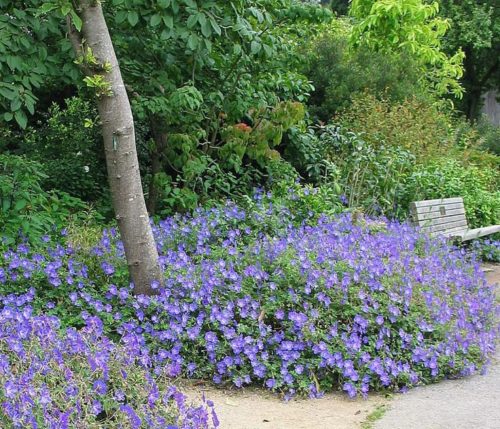
Often, in the garden design, geraniums are able to play the role of background plants - they close emptiness in flower beds. These perennials are perfectly combined with bells, anemons, cloves, spring-timber phloxes and fern.

Clear, geometrically rounded the shape of the bushes, a dense sheet surface, an abundance of colors allow you to use these plants in the foreground in group landings and for wide borders.
A valuable combination of many types of geranium: shadowness and drought resistance, allows them to grow them in the most difficult areas of the garden or a park area.
Thanks to its strong and chain rhizomes, Gerani are great for landscaping areas with a slope.
Dwarf species of geranium are used to create songs of alpine slides or as flower borders, mixboraders and chains.
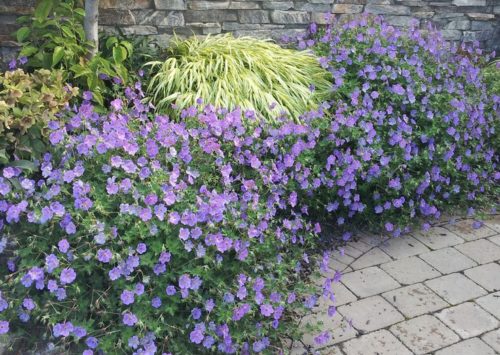
Tall types of garden geraniums are used in mixed mix bears with other perennials to create "wild" sites in the landscape style.
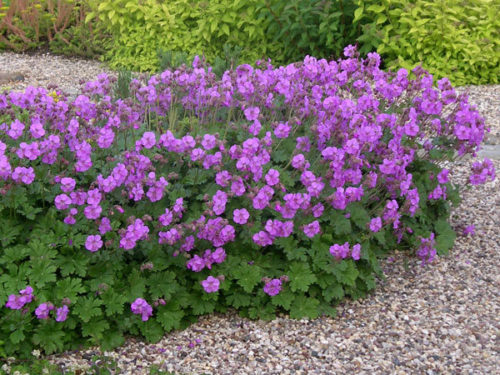
-
in medicine
It has long been, geranium used in folk medicine as a medicament from many diseases.
Even its fragrance has a positive effect on man and his well-being, due to the presence of phytoncids that kill many species of bacteria and viruses. However, possessing a specifically rescued aroma, some people can cause allergies.
Possessing antimicrobial, hemostatic properties, it helps with some forms of diabetes and bleeding. Use it as well as an painful agent.
From white geranium flowers, a soothing decoction is prepared, useful in nervous excitability, neurosis and stress.
In any case, with any diseases, before using geranium, as a medicine, it is necessary to consult a doctor.
So, geranium is unpretentious when landing and leaving, having a long flowering period and high resistance, a perennial garden plant, which is increasingly becoming the best choice for any gardener-flower.
Gerana, photo
Video: "Garden Geran"
Pelargonium, description
Pelargonium is a perennial herbaceous plant, some varieties of which are presented in the form of semi-studies. Plant height ranges from 30 to 80 cm.
The stem can be straight, branched and creep.
Leaves are simple palphell or finger-disseated. The leaves exude a pleasant spicy aroma characteristic of the whole family of Geranium. Geranium essential oil is widely used in perfumes and aromotherapy.
Pelargonium flowers are bright, impressive with a variety of umbrella infraces. Flowers can be terry or simple, monochrome or with several shades.
The fruit, as well as in Gerana, is represented by a box dropped from the bottom to the top.
In the wild form, Pelargonium is growing in South Africa, and as a room plant - known worldwide.
This plant is light and thermal-loving, capable of easily transferring the lack of moisture. In culture, Pelargonium is worn and unpretentious, grows pretty quickly. Abundant spectacular bloom can please the flower flower almost all year round. In the open soil does not winter.
All types of pelargonium grown at home are combined under the general name "Pelargonium room". Pelargonium gene contains more than 250 species.
Varieties and types of pelargonium
Thanks to the development of breeding science, many varieties of Pelargonium are derived. The varieties and species of pelargonium so much that even scientists cannot build a clear classification. Each species has a peculiar aroma (nutmeg, chocolate, citrus, etc.), characteristic conditions of growth and the peculiarities of the appearance. Consider the most common types and varieties of Pelargonium:
- Pelargonium fragrant
Pelargonium fragrant has peristo-closed on 5-7 parts of the leaves, why they seem terry. The leaves contain fragrant essential oil, so even with a slight touch, they make a strong smell. Currently, fragrant pelargoniums with the smell of lemon, mint, roses, orange, pepper, melt, ginger, strawberries, and other flowers are small, most often pinkish or purple. This type of pelargonium is used to obtain gerane essential oil. The most common variety - Graveolens (bush tall and branchy, needs a support). Peppercut variety Lady Plymouth (has large leaves with white or cream border).
- Royal Pelargonium
One of the most spectacular and sophisticated blooming pelargoniums, but at the same time demanding to growing conditions. They are luxurious and more capricious than many other types: bloom only for the second year after rooting cuttings, need special conditions for wintering, flowering them limited 3 - 4 months. It is a powerful bushy plant that achieves 50 cm in a height. Flowers are large, up to 4-7 cm in diameter. The edges of petals are often corrugated, fringe. The color of them is never one-photon due to the mandatory presence of dark spots or strips along the veins. Many of the royal geranium varieties are darker, the top petals than the lower. Prevailing colors - white, burgundy, dark pink, purple. Leaves from royal geranium toothed and wide.
- Pelargonium zone
Pelargonium Zone - the most common, numerous and beloved view - he has thousands of varieties. The varieties of this group are very hardy and resentment. The plant is a reprehensive, dense-blooded buscher, the leaves are slightly wavy, with a red-brown rim around the circle, are pubes with small hairs, have a peculiar smell. The zonal, these pelargoniums were named because of a peculiar color of the leaves, with visible zones painted in a darker or light tone. Zones on the leaves have a different shape, quite often this rings or color spot in the middle of the sheet.
Pelargonium Tulipovoid - a representative of the zonal form of the plant. Pelargonium flowers resemble unconcerned tulips buds with 6-9 petals. The subgroup is characterized by dense flowering in the form of a bouquet.
- Pelargonium thyroid (plush)
A feature of the species are falling stems (up to 2 m long), although there are compact varieties. Due to this feature, the plant is used to land in suspended vases. His second name - Pelargonium plusized - this species received for the similarity of the shape of the leaves with the leaves of ivy. Flowers in these plants are simple, terry and denominations. Coloring red, pink, bluish-lilac, purple or white. Flowers are also with a pattern (spots, stripes) on the upper petals, and two-color, with eye or border.
- Pelargonium "Angel"
This type of Pelargonium is derived by selection, when crossing the royal and curly pelargonium. From the royal pelargonium angels are characterized by a more compact size of flowers and leaves. Flowers resemble the pansies. The view is suitable for growing in pots in the open sun, differ in long blossom and decorativeness. Popular varieties: Burgundy Red, Blueberry, Randy.
- Pelargonium"Unicum"
The result of the selection of royal pelargonium with a brilliant pelargonium, "Unicum" - a neat, unpretentious groove plant with fragrant and dissected leaves. Little, but truly unique varieties, some of which have been preserved from the mid-19th century. Inflorescences of few beautiful flowers, resemble large-flowered pelargoniums. A bush needs forming trimming.
Pelargonia reproduction
Pelargonia breeds seeds and cuttings.
Master and faster breeding Pelargonia cherencaFrom which, with proper care, you can form a beautiful bush in a short time.
The cuttings can be harvested throughout the year, but it is better to do this in the spring, suturing from side or topless shoots so that the cut part is at least 5-7 cm and had 2-3 sheets. Cutting cuttings on an adult and a healthy plant, then remove all the leaves, leaving only a few top. Slices in the uterine plant and cuttings, it is better to treat fungicide, such as charcoal. After that, the cuttings better leave to dry in the air a few hours.
Then, the "rested" cuttings are planted into small separate containers (for example, disposable plastic glasses) with a soil, a moaning solution. The soil is better to choose loose, based on peat. The cups are exposed to a bright place (without direct sunlight) and provide watering as needed (through the pallet and drainage holes at the bottom of the cup).
The rooting of cuttings occurs at a temperature, not lower than +15 ° C. There is no need to build special mini-greenhouses: moisture in the soil and the resulting condensate will lead to plants. For the same reason, the cuttings of pelargonium are not recommended to root in water (the bottom of the escape often gets, not having time to develop the roots).
The rooting of cuttings takes about 3-4 weeks after landing, depending on the time of year and the varieties of Pelargonium.
The best time for vegetative reproduction is March-April or August-September.
Seed Pelargonium reproduction is used much less frequently. Sowing is carried out, as a rule, from mid-November to mid-April. Take, as a rule, purchased seeds, scarified and fully prepared for sowing. Slow them into a special soil mixture (better peat).
The use of its own seeds ripening in August-September is possible only when growing varietal geraniums in favorable conditions with artificial pollination or pollination of insects. Hybrid geraniums with such reproduction losing signs of the parent plant. To speed up the germination of the actually grown seeds, they are scarified them, that is, they are mistaken by fine-grained emery paper, in order to disturb the integrity of the hard coating shell.
Seeds close in the soil shallowfall, slightly sprinkling the earth and moisturizing with water from the spray. The distance between the seeds is at least 5 cm.
The container (pot) with seeds is better at the beginning to cover with a film, building a mini-greenhouse. The optimal temperature for the growth of pelargonium seeds will be the temperature of about 20 ° C. Approximately after a week - one and a half appear the first shoots. When seedlings are growing, and about 4 leaves will appear, you can dive them, planting into separate pots.
Pelargonium, landing and care
Transplanting Roshkov Pelargonium is a fast and easy-to-see. Gently separating sprouts, they are planted with a small lounge of the earth into separate pots (with a diameter of no more than 10 cm).
Watering the planted pelargonium is better with a cloth with a narrow nose.
On cloudy days, it is better to add lighting so that its deficit does not lead to the yellowing of the leaves and their fallout.
Room Pelargonium, with the onset of heat, you can land in the open soil. To preserve moisture, the soil under the plant is recommended to climb. Further care will not be much labor. Watering is carried out about once a week, the tagged flowers and yellowed leaves are regularly removed, periodically make fertilizers. Without waiting for the onset of frosts, the plant is again transplanted into room flower pots.
The uniqueness of Pelargonium lies in almost continuous flowering throughout the year. But to achieve this, it is necessary to provide it with the right departure:
- Lighting
Pelargonium is a light-insulated plant, which, extremely rarely negatively responds to a long exposure to direct and sultry sun rays. Their excess can entail the fading of leaves and flowers of the plant, followed by their fall. The flower feels perfectly on solar window sills on the south side, and when landing in the summer garden - on a sunny and a windless place. Quietly tolerates Pelargonium and a light halftime, but in the shade - the leaves will be imposed strongly. Summing up, we denote that the lack of lighting for Pelargonium is destroyed.
- Watering
Watering is better to carry out not frequent, but abundant, at the very first signs of the soil drying. So that the water in the pot is not stored, and the plant did not start, it is important to ensure good drainage (for example, put the pots on the bottom of the pot). Excessive watering contributes to reducing and subsequent plant disease. In case of blackening the stem, the pelargonium will not be able to save. We can say that Pelargonium is more prone to drought than to excess moisture. Spray Pelargonium is also not worth it, as it prefers fresh dry air.
- Temperature mode
Pelargonium, a thermo-loving plant, and loves heat, but not a strong heat. At temperatures below + 12 ° C, it stops blooming, and at lower temperatures - may die. If in the winter at Pelargonium, standing on the windowsill, suddenly blushed the edge of the leaves, then it is necessary to push it away from the frosty window.
- The soil
The soil should be lightweight, moderately fertile and loose. Pelargonium perfectly responds to adding sand, peat and fertilizer to the universal land mixture. It is important to ensure a good drainage layer of large clay in a potted pot.
- Podchar
There are special feeding for pelargoniums that take into account all its needs. Universal fertilizers can be used. The frequency of feeding is 1-2 times a month.
- Trimming and pinching
To ensure the continuation of the flowering of pelargonium, you need to regularly remove the blurred inflorescences. In the fall comes the trimming of the shoots of Pelargonium. Leave the stem with 6-7 leaves. You need to delete shoots that are growing not from the root, but from leafy sinuses. If the plant again went out again, in the spring (in early March) it can be cut again, leaving only a few kidney on the stem. Sliced \u200b\u200btwigs can be used as cuttings for breeding. In the future, in order to improve flowering and make a bush of Pelargonia thicker, shoots plug after 4-5 leaves. It looks much more beautiful than the plant, if there are low and lush bushes in pots, rather than long naked stems with leaves and flowerflowers at the ends. To enhance branchiness, the stems can also be segged to young shoots. You can do this at any time of the year if necessary.
- Transplanting home pelargonium
Pelargonium does not like transplants, and not very much in need. Only when the roots begin to get out of the drain hole of the pot, you need to transplanses it in more (for several centimeters) pot. The landing or transplant of Gerani is carried out in early spring, when the plant begins the growing season. If you take too much pot - Pelargonium will grow, but there will be no bloom.
- Fighting pests and diseases
The plant rarely sick and, if it happens, then, as a rule, the cause is incorrect care.
From diseases can develop root rotand Rink root (in the case of excessive soil convergence). This is for Pelargonium, unfortunately, deadly. The affected plants are destroyed, the soil is also better replaced.
WITH gray mold On the leaves (gray rot) you can fight: stop watering, remove affected leaves, spray with an antifungal drug, put it in the sun.
The main pests of Pelargonia are bellenka and tolaWith which it is easy to fight. It is enough to spray the leaves insecticidal preparation ("bison", "confident", "Aktellik", "Fufanon").
The most frequent questions on the care of indoor pelargonium
Why do pelargonium leaves yellow?
There may be several reasons:
- if the leaves turn yellow and dry only the edges - the plant lacks moisture;
- if the yellowness of the leaves is accompanied by lethargy, then the reason is in excess of moisture;
- if the plant turns yellow and loses the bottom leaves - not enough lighting or plant has become a pot;
- If the stems are naked and leaves fall (sometimes not even yellowed) - too little light;
- It is possible to defeat the blonde, for this you need to examine the lower part of the sheet;
- Sometimes the reason for the yellowing and foaming of the leaves can be adaptation when changing the place or after the transplantation of the plant.
Why does Pelargonium do not bloom?
The reasons may be the following:
- too low temperature or shortage of lighting;
- too fertile soil;
- too hot air indoors;
- too spacious pot, stimulating the growth of the root system, but inhibit flowering;
- untimely trimming;
- irregular feeding of plants.
NS ochia Pelagrony dries?
The reasons may be the following:
- if the leaves dry only the tips - the plant lacks moisture;
- If the leaves are first covered with red-brown spots, then begin to dry and disperse - perhaps the fungal disease "Rust". It is necessary to spray the pelargonium with a five percent solution of burgundy liquid or twice to treat it with phytoosporin with an interval of 7-10 days.
Application of pelargonium
Naturally, the main purpose of indoor pelargonium for a person is to give beauty, aesthetic pleasure and delight with its magnificence. Harmony of natural paints of Pelargonium, combined with a pleasant spicy aroma creates truly real home comfort and a special mood.

In the summer, the Pelargonium is widely used in the design of flower beds and chains, and spectacular kashpo decorate gazebos and walls of houses.

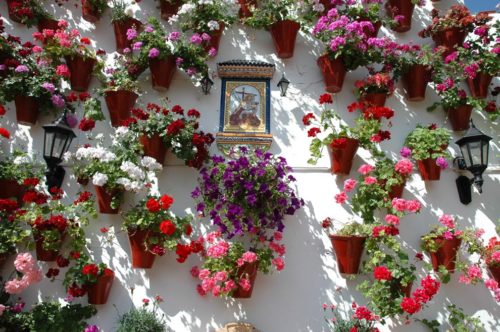
Thanks to the enormous variety of simple, semi-world and terry inflorescences of a wide palette of pelargonium flowers, it is well combined with almost all plants and is used in a variety of compositions. To simulate the natural landscape near the bushes of Pelargonium, cereals and hosts are placed. If you need to form a motley flower, the flower should be located next to the gravilates, and carnation.
In addition to decorative qualities, geranium is famous for both healing properties. The decoction of its leaves is widely used in folk medicine for the treatment of diseases of the gastrointestinal tract, with headaches and as an antidepressant with nervous disorders. From the leaves of Pelargonium, as well as geraniums get fragrant geranium essential oil. And the extract of the roots of certain types of pelargoniums is used in medicine in the treatment of ENT organs. Along with the plantain, the leaves of Pelargonium are able to stop blood, healing the wounds and remove the pus. Pelargonium perfectly cleans the air, and this, again, plays in favor of our health.
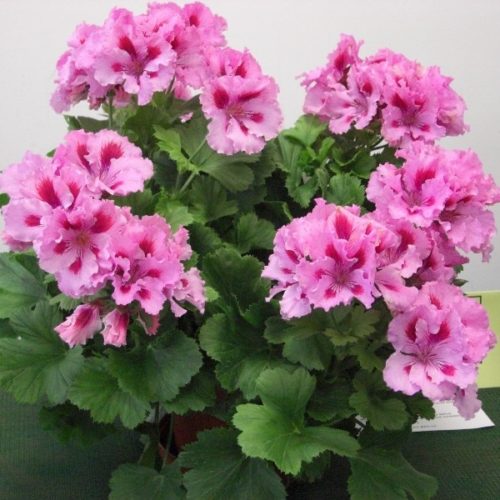
Pelargonium, photo
Unpretentious to the conditions of growth, simplicity of reproduction and high decorative qualities make this home flower universal, as it is possible to grow a pelargonium not only in room culture, but also in the garden in the warm season. When creating favorable conditions and proper care, the plant can bloom on the windowsill throughout the season.
Video: "Care and reproduction of Pelargonium"
Thus, plunging into the beautiful and unique world of the Geranium family, we met closer with representatives of two births: Geranium and Pelargonium . As it turned out, each culture is unique in its own way and is distinctive.
The article clearly indicates the differences between these plants, the most popular species and varieties of the Geranium family are presented, a detailed description of the agricultural scientists of cultures has been proposed. It remains only to make a choice: grow garden geranium or make a room pelargonium? Do not doubt - you need to breed both cultures! Believe me, the results will exceed all the expectations!

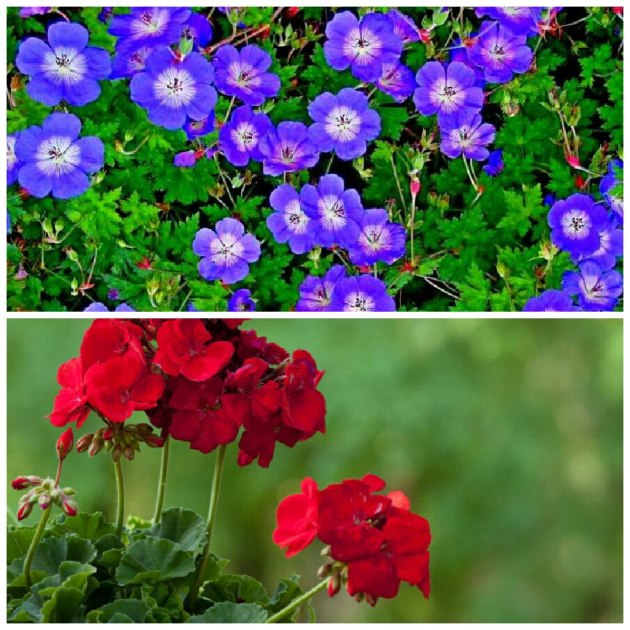

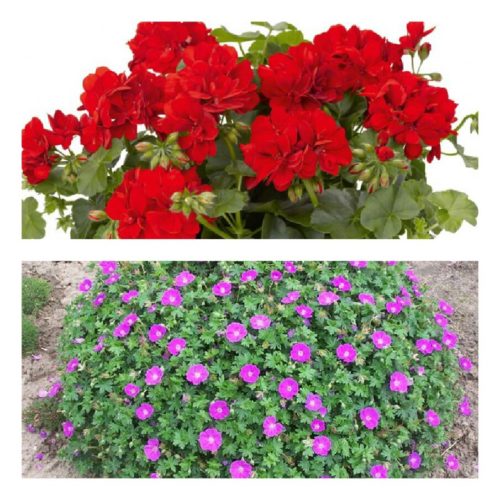
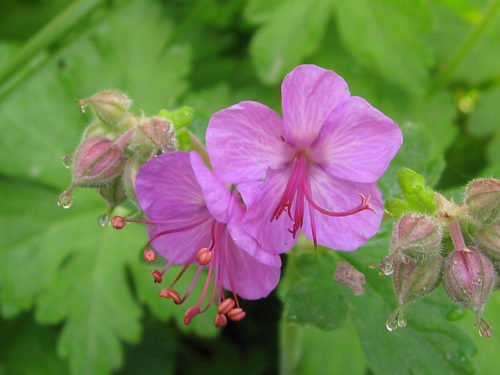
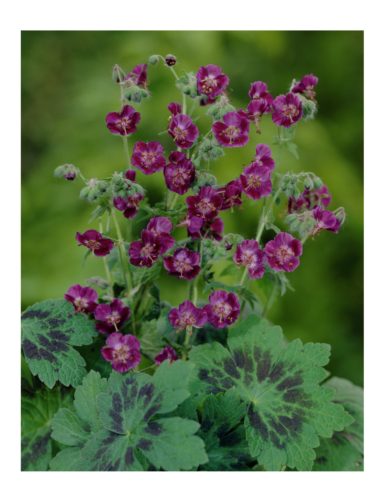
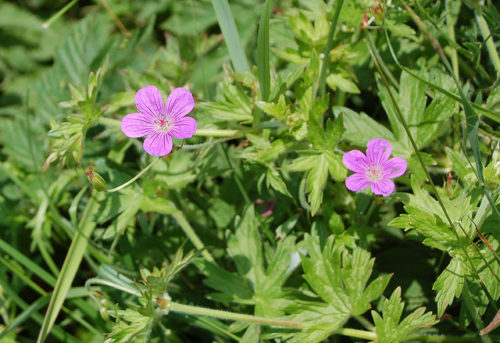
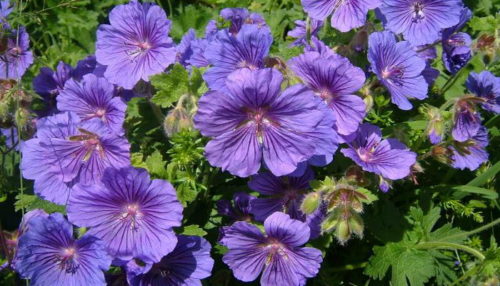
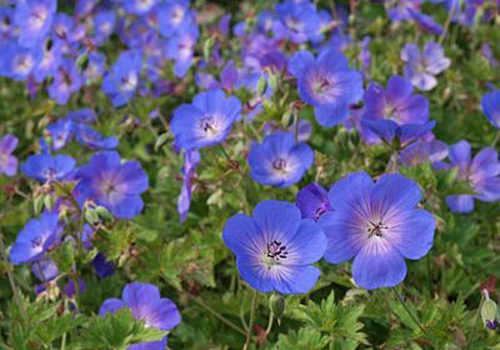
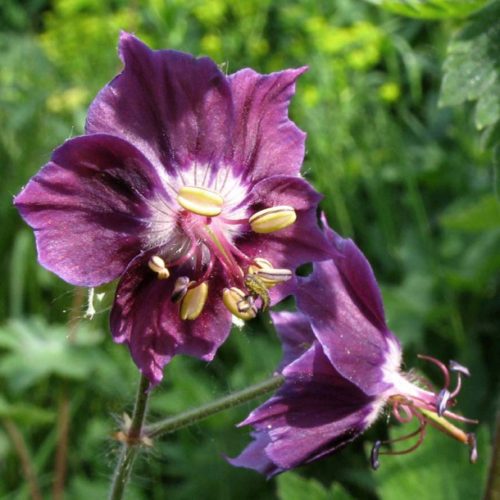
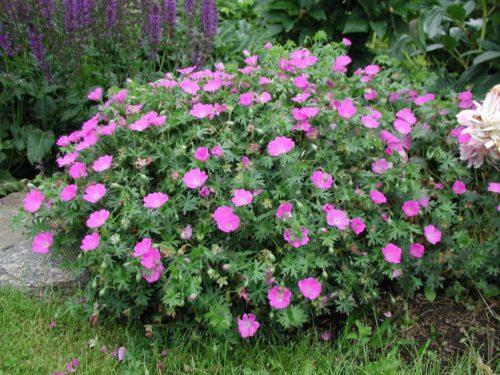
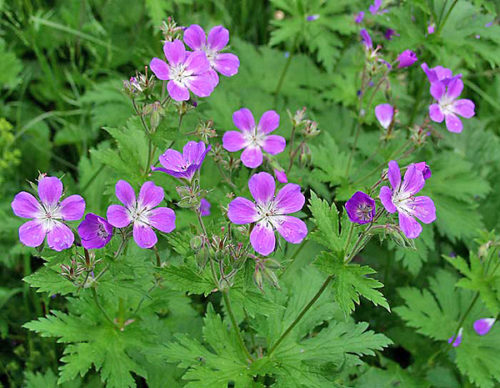
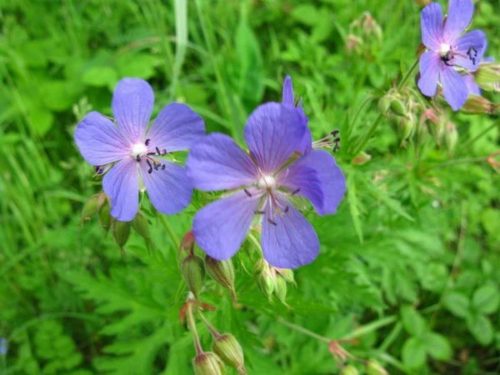
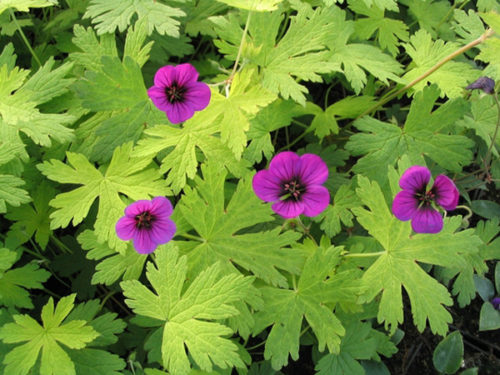
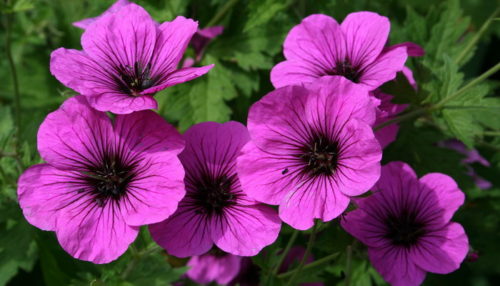
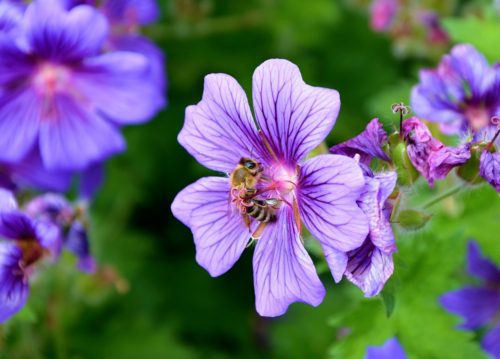
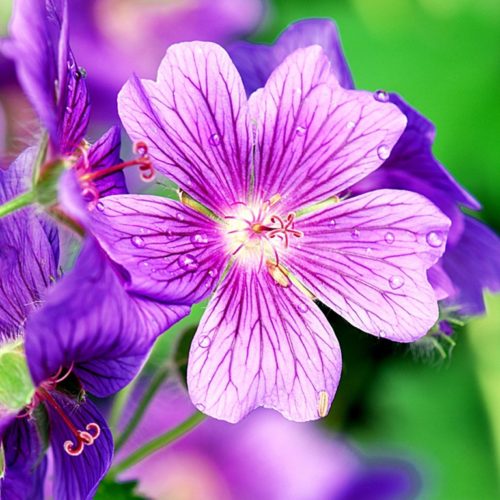
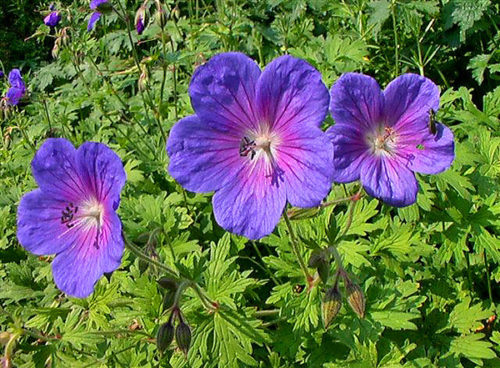
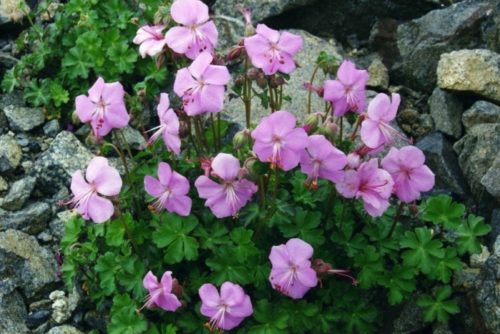
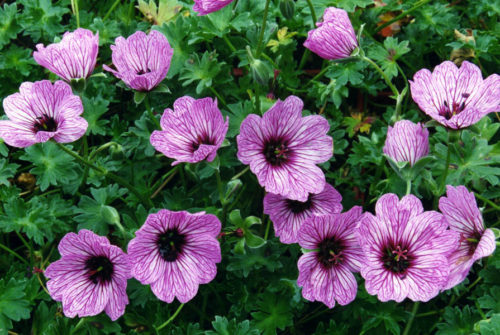
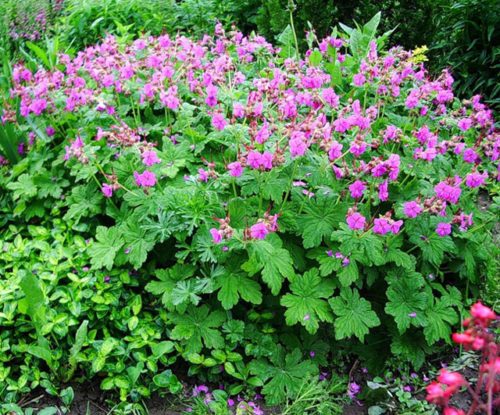

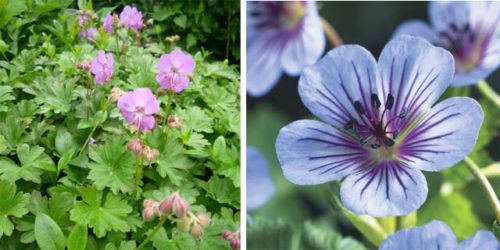
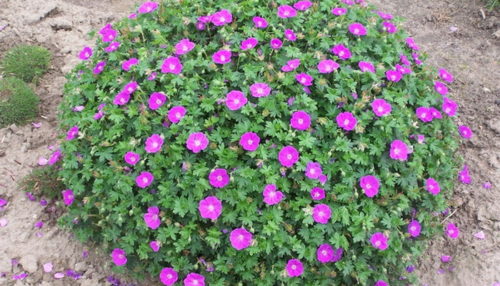
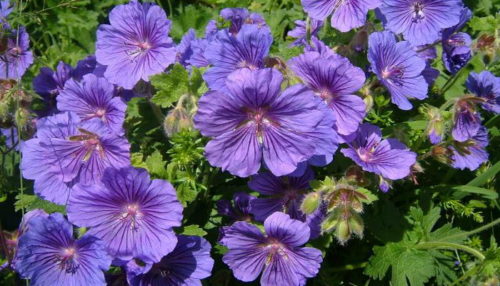
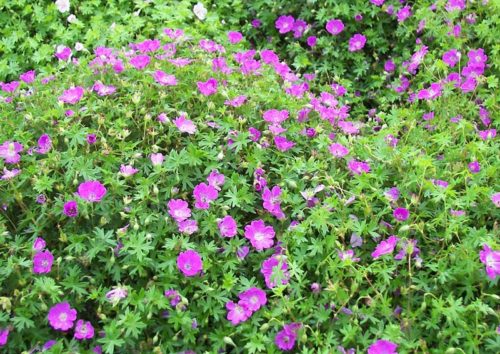
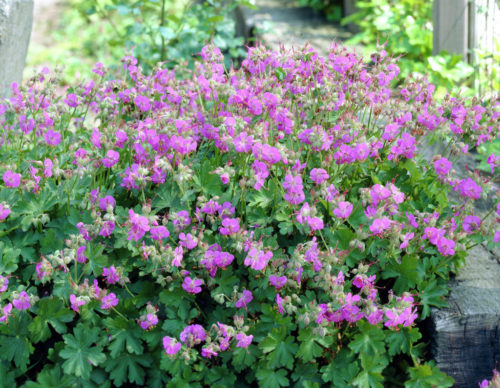
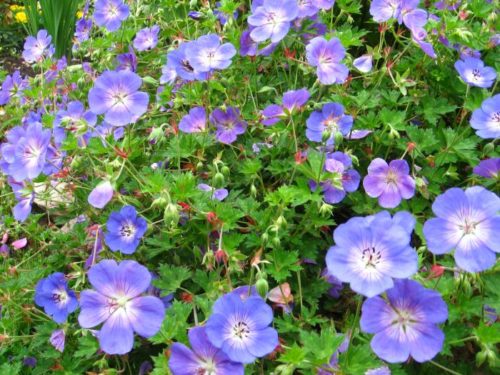
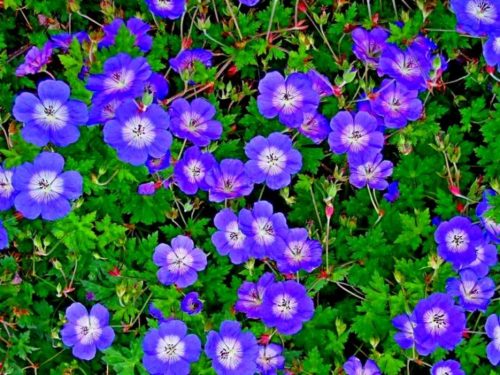
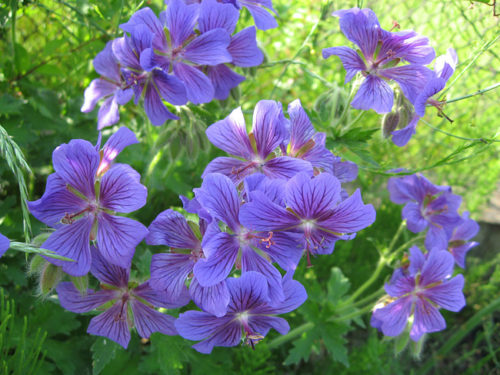
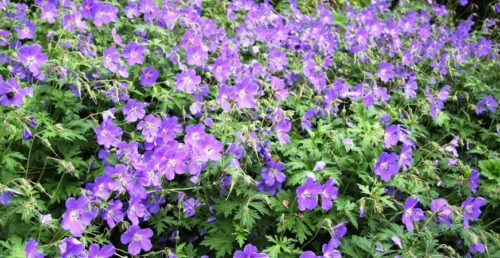
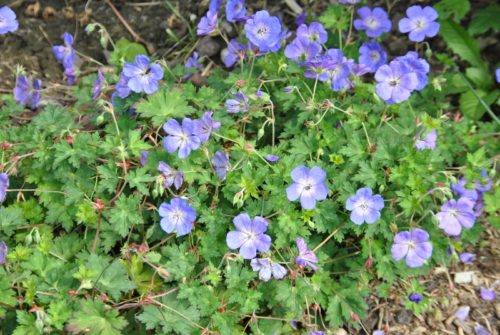
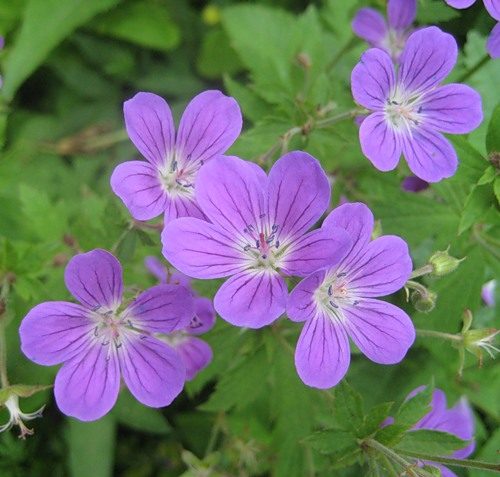

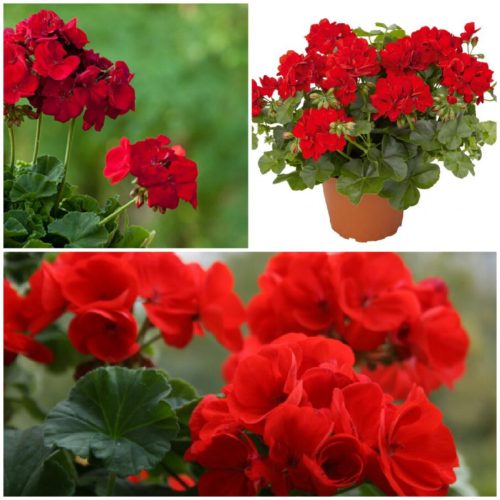
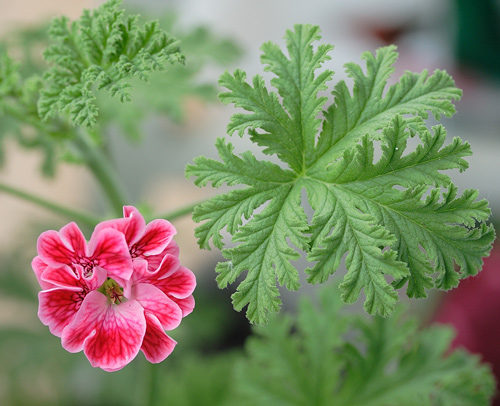
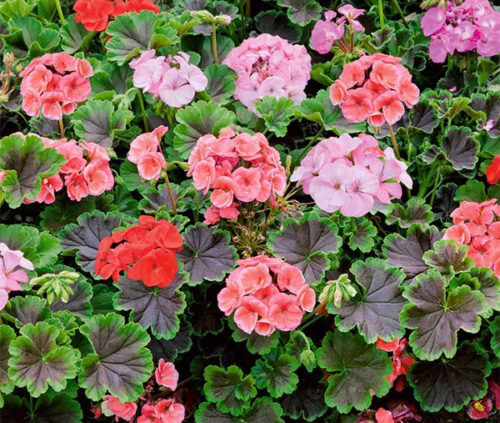
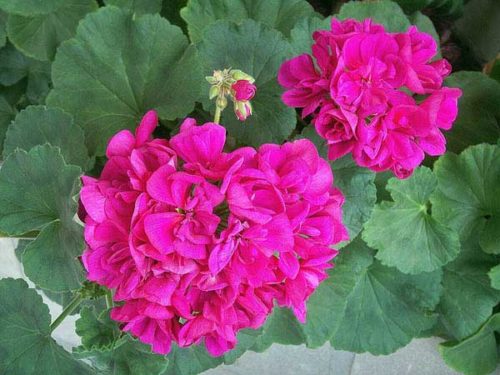
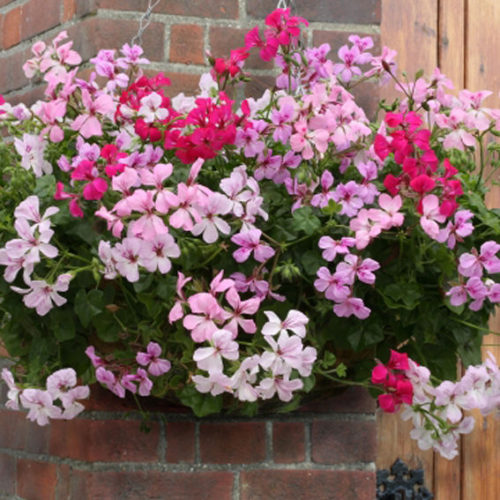
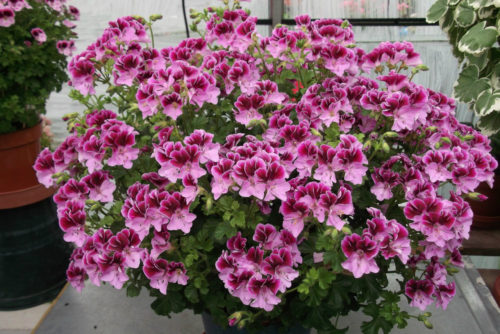
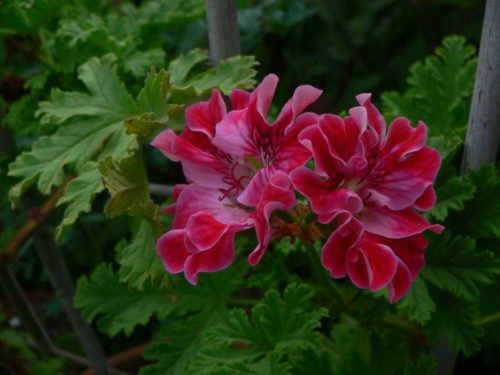
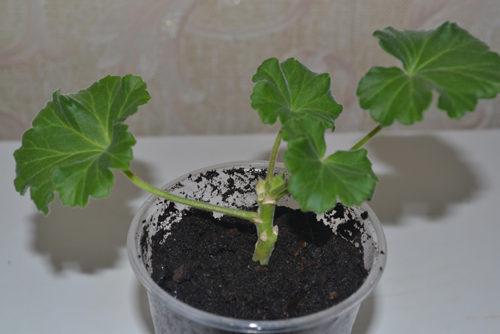

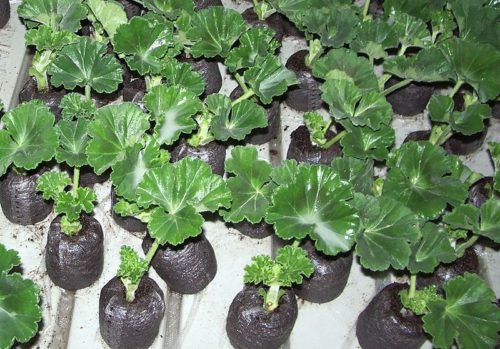
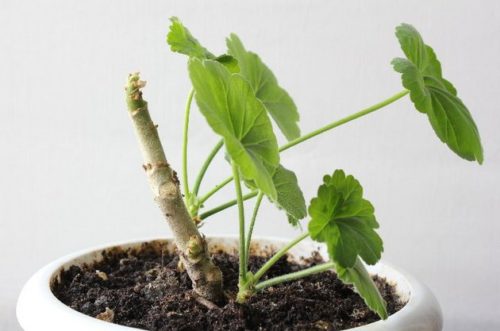
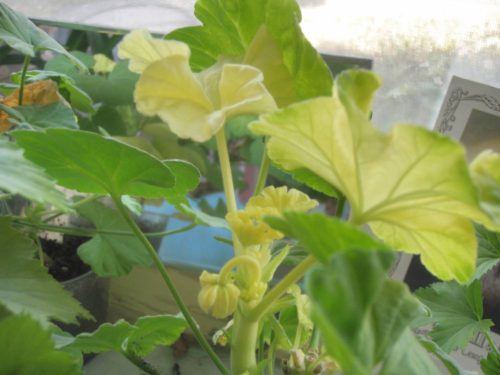
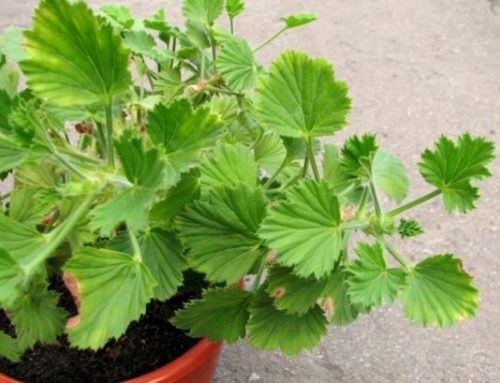
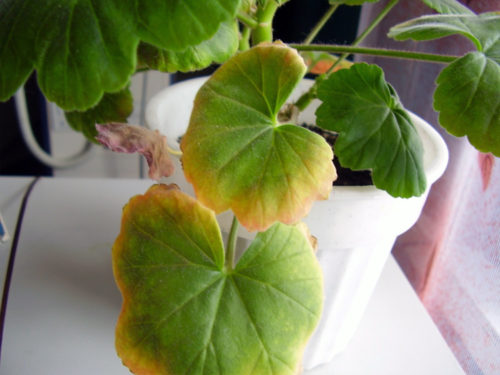
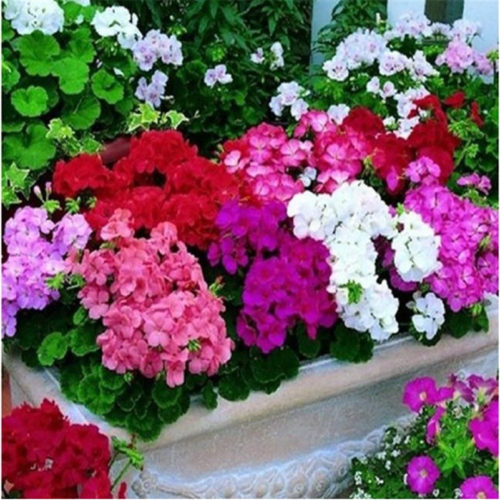
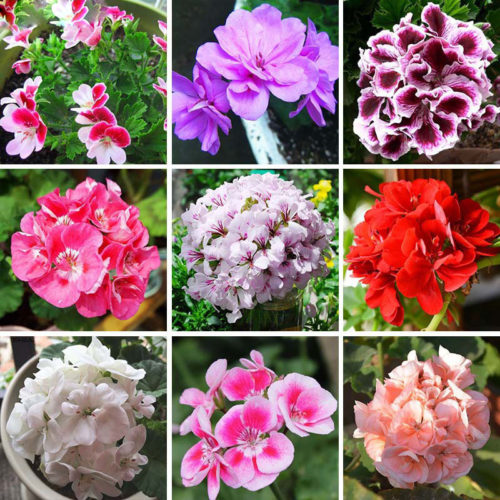
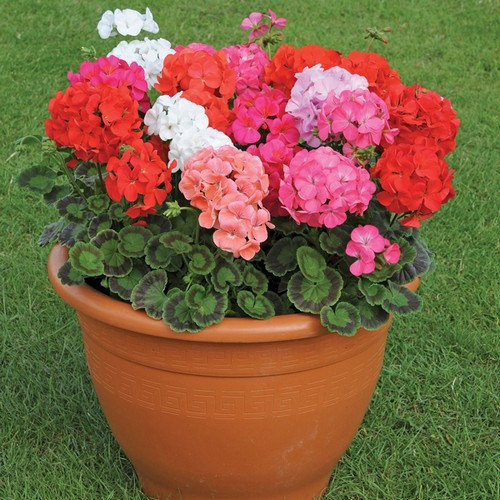
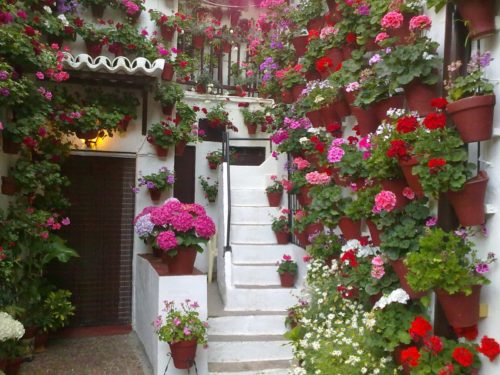
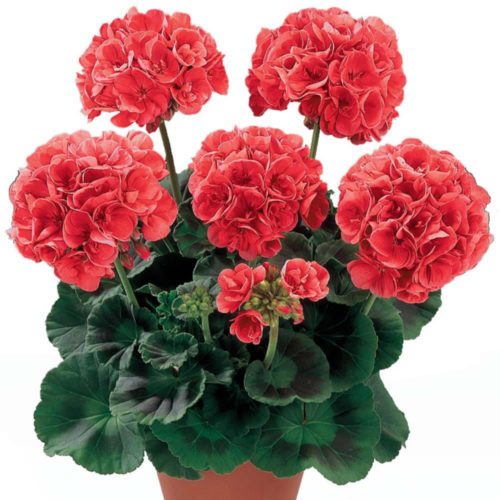
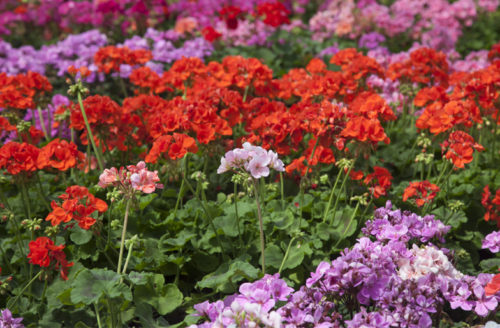
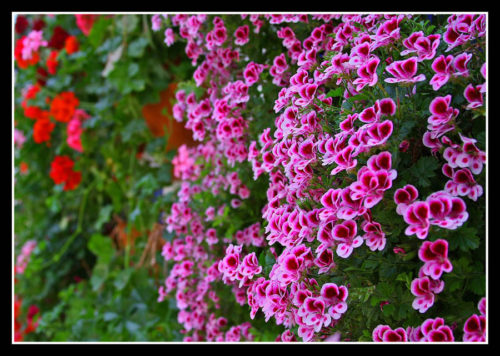
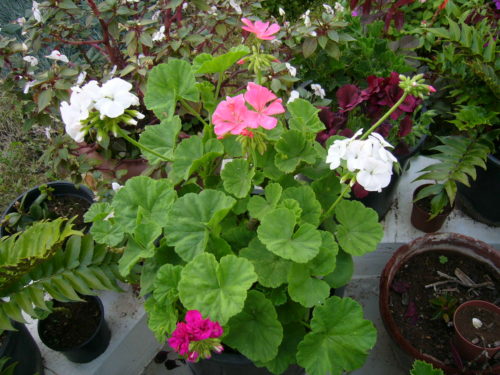
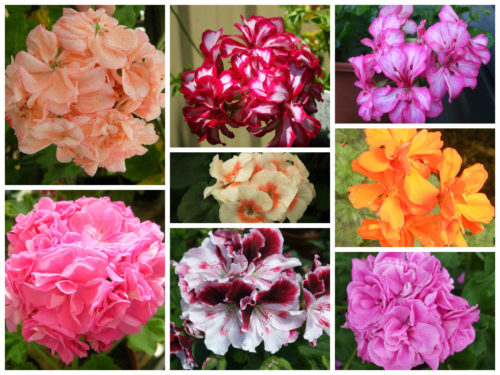
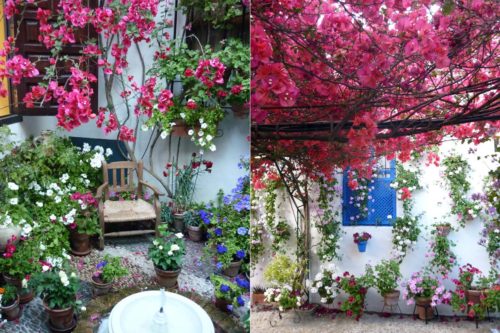
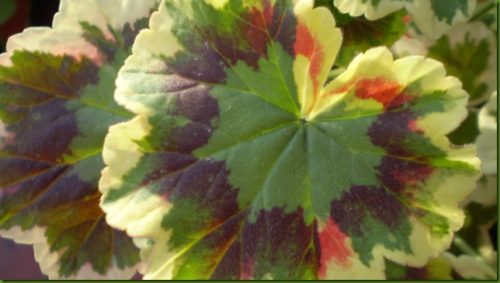





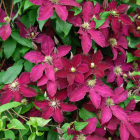
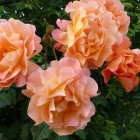

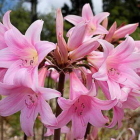
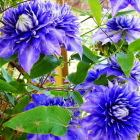
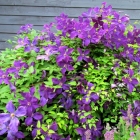
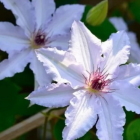
 Start a discussion ...
Start a discussion ...